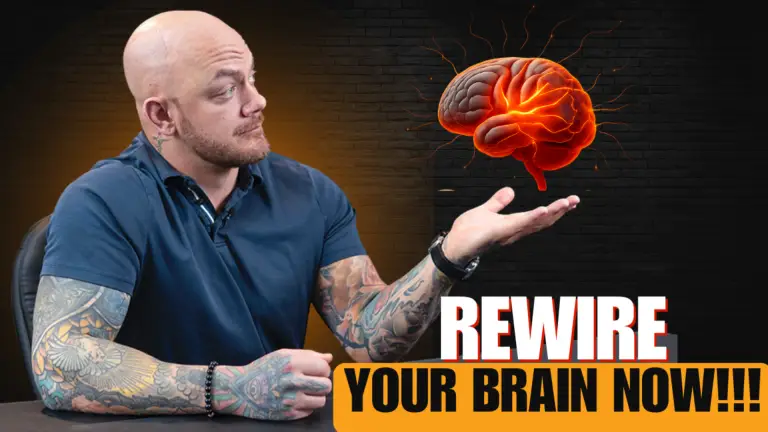You are not broken. Your mind isn’t damaged beyond repair. In fact, science has proven that the human brain is capable of incredible change—no matter how long you’ve struggled with drug addiction or substance abuse. If you’ve ever wondered how to rewire your brain from addiction, you’re not alone—and you’re not without hope.
Every craving, trigger, and relapse you’ve experienced has been part of a pattern—familiar neural pathways formed through repetition. But here’s the truth: those patterns can change. Your brain’s ability to adapt is called neuroplasticity, and it means that recovery isn’t just emotional or spiritual—it’s also biological.
This article will walk you through the real science of brain function, why your brain does what it does in addiction, and how you can start forming new pathways that support a life of purpose, peace, and power. Recovery isn’t luck. It’s process. And it starts now.

“You’re not stuck. You’re being rewired.”
Every thought you choose is building a new future—one connection at a time.
How To Rewire Your Brain From Addiction
Rewiring your brain from addiction isn’t just a concept—it’s a proven biological process rooted in neuroplasticity. The brain rewires itself by forming new neural pathways in response to repeated behaviors, thoughts, and environments. That means every healthy action you take—whether it’s going for a walk, journaling, or helping someone—lays fresh track in your mind.
In addiction, addictive substances reinforce highways in your brain’s reward center, making addictive behavior automatic. These pathways impair the prefrontal cortex, the part responsible for decision making, impulse control, and executive control. But through consistent, intentional action, new roads can form—and old ones can fade.
One of the most powerful tools in this rewiring process is physical exercise. Movement stimulates the release of brain-derived neurotrophic factor (BDNF), which supports the growth of brain cells and improves cognitive function. Exercise has also been shown to heal parts of the brain structure affected by long-term substance use disorders.
Rewiring in Addiction vs. Recovery
| Addiction Pathway | Recovery Pathway |
|---|---|
| Repeated drug use | Repeated healthy routines |
| Reduced impulse control | Strengthened executive function |
| Damaged reward circuitry | Rebuilt through service & structure |
| Automatic drug seeking behavior | Conscious action toward healing |
| Environmental triggers dominate | New behavior patterns replace them |
Every moment of clarity, every act of service, every rep at the gym—your brain is listening. And it’s adapting.
Rewire Your Brain With Our Free Relapse Prevention Worksheet
Behavioral Therapy & the Brain’s Reward System
Behavioral therapy is one of the most effective tools for targeting the neurological roots of addiction. While substances hijack the brain’s reward system by flooding it with dopamine, therapy retrains the brain to find that same sense of reward in healthy, meaningful activities. Over time, new associations are built—between achievement and joy, connection and safety, recovery and self-worth.
Unlike medication that works chemically, behavioral therapy works through repetition, dialogue, and action. It encourages clients to identify distorted thinking, interrupt automatic responses, and practice new behaviors that light up the brain in different ways. These aren’t just mental exercises—they influence brain functions directly by promoting activity in areas responsible for emotional regulation and impulse control.
“Behavioral therapies help people in drug addiction treatment modify their attitudes and behaviors related to drug use.”
Your Brain After Addiction: What Science Shows
Emerging research reveals a powerful truth: the brain doesn’t stop evolving after substance abuse—it starts healing. When drug use stops and recovery begins, the brain initiates a series of regenerative changes that science can now observe through structural brain measurement techniques.
In long-term users, brain scans have shown decreased gray matter volume in areas responsible for memory, decision-making, and emotional regulation. However, in early recovery, these areas begin to show increased density and connectivity—especially when individuals engage in addiction treatment that includes cognitive and behavioral components. The brain’s ability to heal is deeply influenced by environmental factors, including routine, support systems, and daily choices.

Study Highlight (fMRI):
Using functional magnetic resonance imaging, scientists observed increased activity in the prefrontal cortex of individuals abstinent for 12+ months—supporting long-term brain recovery and improved mental health.
Functional Magnetic Resonance Imaging & Brain Recovery
Functional magnetic resonance imaging (fMRI) has revolutionized how we understand the recovering brain. Rather than relying on self-reporting or visible symptoms, fMRI measures real-time brain activity, showing exactly how different regions respond to abstinence, therapy, and healthy routines.
In people recovering from drug consumption, fMRI has shown enhanced connectivity between the prefrontal cortex and emotional regulation centers. These changes are associated with better impulse control, emotional balance, and long-term recovery outcomes. This imaging technique is considered a promising additional therapeutic tool not only for research, but for tracking progress in individual treatment.
Brain Chemistry and Neural Pathways in Healing
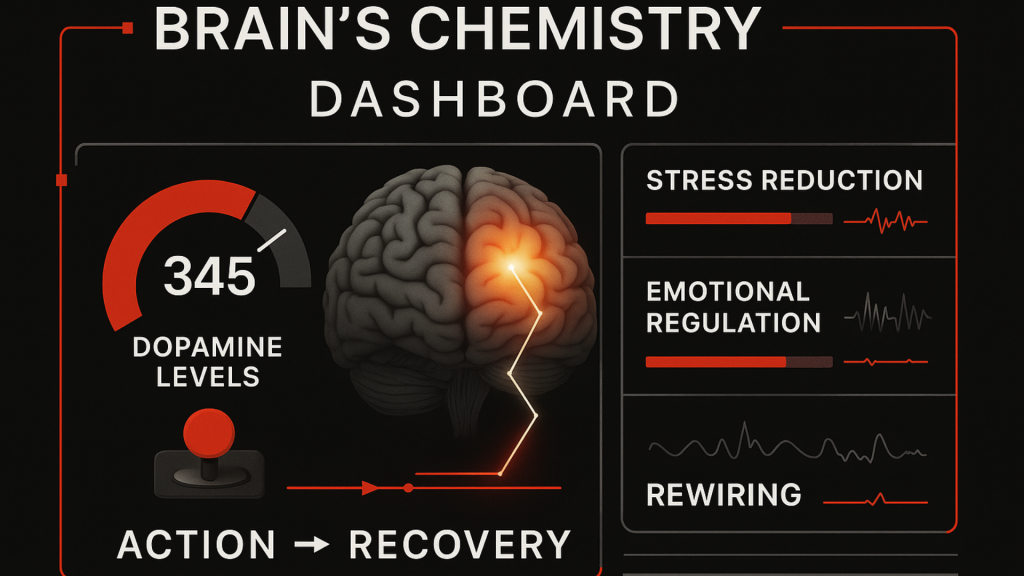
The brain rewiring process depends heavily on chemistry. Long-term substance abuse disrupts neurotransmitter systems—especially dopamine, serotonin, and GABA—leaving people with emotional instability, low motivation, and anxiety in early recovery.
As you begin to heal, the brain slowly recalibrates these chemicals, stabilizing mood and improving cognitive functions. In this phase, new neural pathways start to form, replacing those conditioned by addictive behavior. This isn’t just a mental shift—it’s biological rebuilding.
Nutrition, regular exercise, connection, and therapy accelerate this recalibration, directly impacting brain health. When new behaviors are repeated consistently, they become the brain’s new default, allowing deeper healing in both mental health issues and physical brain structure.
Building New Neural Pathways in Early Recovery
Early recovery is when your brain is most actively rewiring. The old neural pathways built during active addiction don’t just disappear—they weaken when you stop reinforcing them. At the same time, new pathways are forming every time you choose a different action.
Engaging in daily practices like journaling, prayer, or attending a recovery group can speed this process. These habits light up brain regions associated with introspection, connection, and emotional stability. The more often you perform a healthy behavior, the more the brain prefers that route.
Consistency is more important than intensity. The goal isn’t to feel perfect—it’s to act differently until the new patterns take root.
Habits That Build New Neural Pathways
- Journaling your thoughts daily
- Support Groups attended weekly
- Prayer or Meditation practiced consistently

The Role of Brain Cells in the Rewiring Process
Brain rewiring starts at the cellular level. During addiction, some brain cells are damaged by excessive exposure to addictive substances, but many remain intact and ready to regenerate. This regeneration process is key to restoring healthy brain function.
New cells—particularly in the hippocampus—help rebuild memory, learning, and emotional balance. Regular engagement in healthy behaviors stimulates neurogenesis, which is the creation of new brain cells. Over time, these changes improve overall brain function and support the long-term rewiring process.
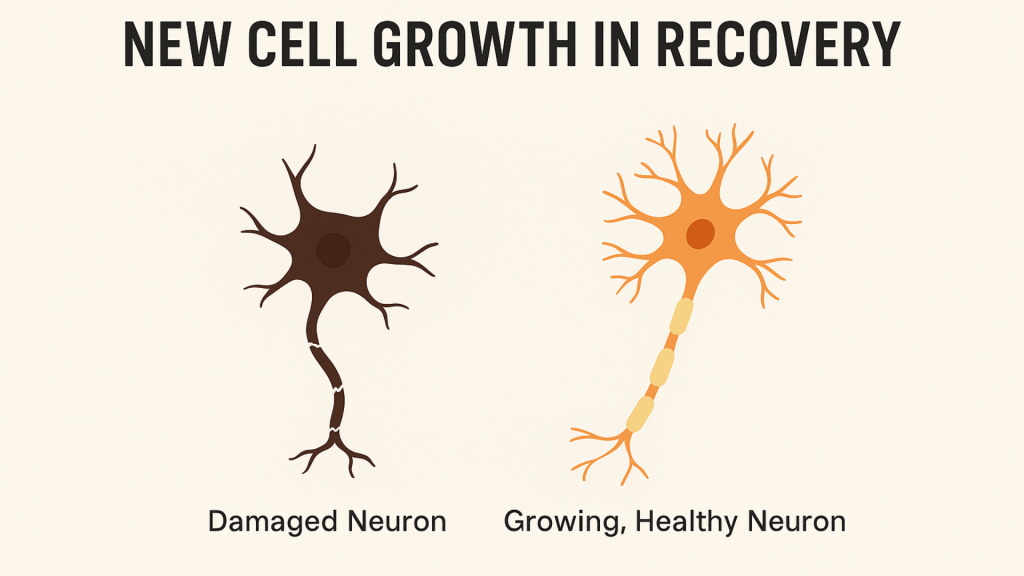
Addiction Treatment That Supports Brain Rewiring
Effective addiction treatment isn’t one-size-fits-all—but the best programs all support the brain rewiring process. By combining evidence-based therapy with meaningful structure and connection, these programs give the brain what it needs to heal.
For example, outpatient treatment provides flexibility while promoting accountability. Behavioral therapy helps identify and replace destructive thoughts. And peer support introduces new social feedback loops, reinforcing new behavioral norms.
According to the National Institute on Drug Abuse, long-term treatment leads to improved mental health and measurable changes in brain recovery, especially in areas involved with motivation, memory, and learning.
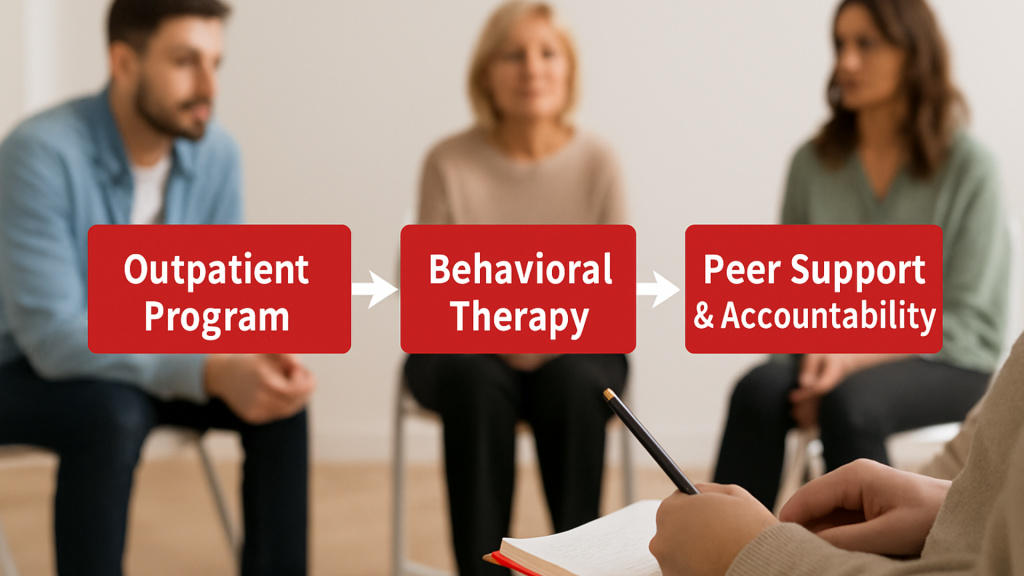
“Therapies that modify behavior have been shown to restore healthy brain activity and reduce relapse risk.”
— NIDA
Physical Health and the Brain: Why It Matters
Physical wellness is one of the most underrated tools in recovery. Activities like aerobic exercise, strength training, and even walking enhance brain health by increasing blood flow and oxygen to brain areas related to motivation and mood.
Exercise also boosts dopamine and serotonin—the same neurotransmitters hijacked by drug consumption. But this time, your brain isn’t being flooded unnaturally. It’s learning how to regulate itself again.
Pair that with a healthy diet, hydration, and regular exercise, and you’re actively creating a chemical environment that supports recovery. These choices help rebuild the body’s natural rhythms and reduce the severity of mental health issues often triggered by post-acute withdrawal.
Impact of Exercise on Brain Chemistry
| Habit | Dopamine Boost | Stress Reduction | Mood Stability |
|---|---|---|---|
| Running | High | Yes | Strong |
| Healthy Meals | Moderate | Yes | Moderate |
| Consistent Sleep | Supports | Yes | Essential |
How Purpose and Identity Shift the Addicted Brain
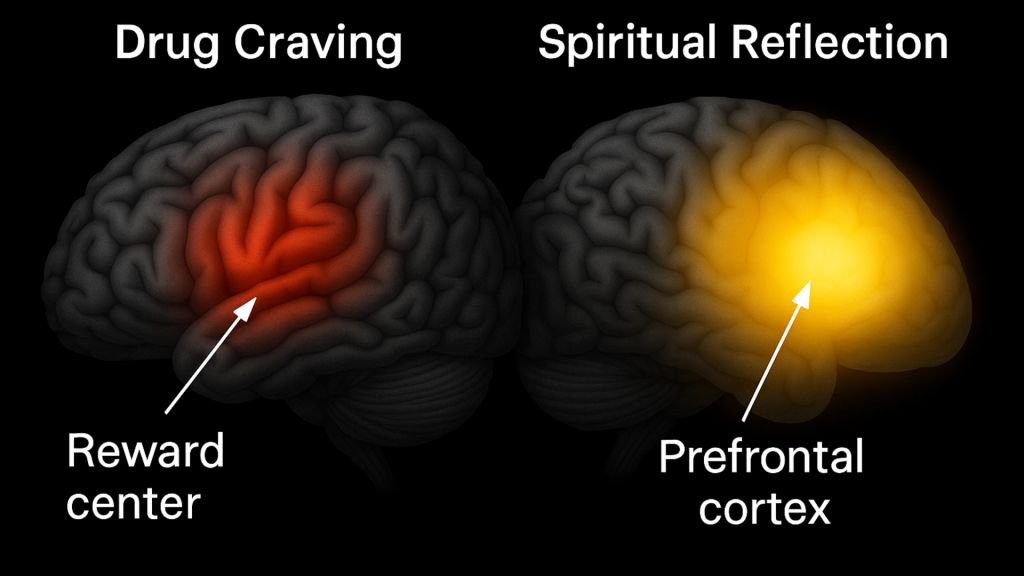
True transformation in recovery doesn’t just come from what you stop doing—but from who you start becoming. Neuroscience shows that when you adopt a new identity rooted in purpose—whether through service, faith, or mission—it alters the brain’s long-term reward mechanisms.
Instead of chasing relief, your brain rewires to pursue meaning.
Research has shown that spiritual reflection, surrender, and awe activate regions of the brain associated with emotional regulation, long-term planning, and inner peace. These experiences stimulate dopamine pathways differently than addictive substances—creating balance instead of chaos.
Purpose-oriented recovery shifts your internal narrative. When you move from “I’m broken” to “I’m needed,” the brain’s reward system responds with more stability and less craving. It’s not just behavioral—it’s neurological identity work.
| Thought | Emotion | Brain Response |
|---|---|---|
| “I need to use” | Anxiety | Amygdala, craving centers fire |
| “I’m meant to serve” | Calm & focus | Prefrontal cortex activates |
How Purpose, Connection, and Repetition Rewire the Brain
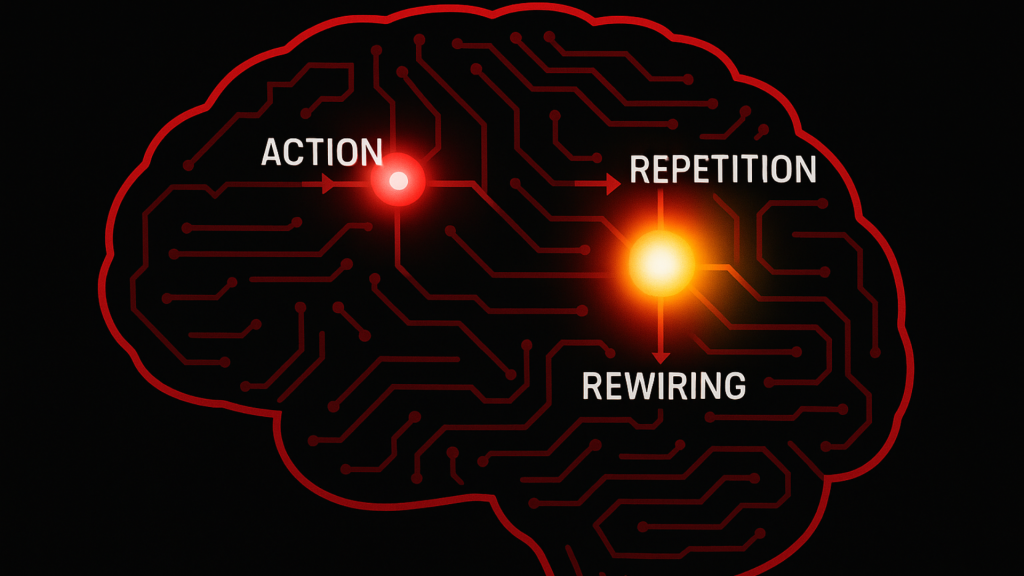
Recovery doesn’t happen in a single breakthrough—it’s built through consistent, purposeful action repeated over time. As addiction progresses, it trains the brain’s circuitry to respond automatically to stress, boredom, or emotion with substance use. But through the science of neural plasticity, we now know that the brain can unlearn those responses—and replace them.
Spiritual and purpose-driven habits—like service, prayer, and reflection—offer the brain new meaning. And when these practices are repeated daily, they become anchors in recovery. You may not feel changed on day one, but each action you take rewires your response to life.
The brain plays a long game. It doesn’t need perfection, it needs healthy habits. Studies in addiction research, including diffusion tensor imaging and positron emission tomography, show that sustained recovery environments—especially those with family therapy and peer support—help the brain heal from the damage caused by substance misuse and addictive drugs.
You don’t have to feel ready. You just have to act. Because the brain doesn’t wait for belief—it rewires the same way a path is carved: one step at a time.
“It’s not how perfect you are—it’s how often you practice.”
Community & Scientific Proof the Brain Can Heal

The brain doesn’t heal in isolation—community is medicine. Connection with others plays a critical role in recovery, not just emotionally but neurologically. Positive social bonding activates oxytocin, which stabilizes mood and reduces the need for drug seeking behavior to feel relief.
Brain imaging studies, including diffusion tensor imaging, confirm what people in recovery already know: the brain rewires when it feels safe and supported. In environments structured around purpose, community, and consistent care, regions damaged by substance abuse—including those responsible for decision-making and executive control—begin to regenerate.
Addiction treatment that incorporates peer support, group accountability, and family systems is proven to enhance these effects. Over time, the chaos of drug addiction is replaced with patterns of emotional regulation, especially when combined with physical exercise and structured routine.
Healing doesn’t happen the same way for everyone, but it follows the same principles: consistent action, compassionate connection, and spaces where recovery identity can thrive. These ingredients don’t just support sobriety—they build lasting mental health.
“Studies show significant brain function improvement in 6–12 months of consistent recovery.”
FAQ – Rewiring Your Brain From Addiction
How long does it take to rewire your brain from addiction?
Rewiring begins in the first month with reduced emotional volatility. By 90 days, mood regulation improves noticeably. After one year of consistent recovery practices, cognitive clarity, impulse control, and emotional balance often return. Every healthy day compounds progress, creating new patterns that gradually replace the old.
Can the brain fully heal after addiction?
While everyone’s journey is unique, research shows that over 80% of people experience measurable brain improvements—especially in memory, focus, and emotional regulation—after a year of sustained recovery routines, therapy, and connection. Full healing is possible when structure, support, and purpose are consistently prioritized.
What are the best daily practices for brain health in recovery?
Start with a regular sleep schedule and balanced meals. Add journaling to process thoughts, prayer or meditation for peace, and peer connection to stay supported. These simple, repeatable actions strengthen new brain pathways and protect long-term recovery.
Is medication required to rewire the brain?
Medication can help stabilize brain chemistry early on, especially during withdrawal or cravings. However, lasting rewiring depends on behavioral change, connection, and routine. Both paths can work—many combine them. The key is building internal structure that empowers recovery beyond the prescription.
Adam Vibe Gunton is an American author, speaker and thought leader in addiction treatment and recovery. After overcoming homelessness and drug addiction, Adam found his life’s purpose in helping addicts find the same freedom he found. As Founder and Executive Director of the 501(c)3 nonprofit, Recovered On Purpose, and Managing Partner of Behavioral Health Partners, Adam has helped thousands find freedom from addiction all over the world.
